Road Safety at Work: Training Drivers Means Protecting Teams
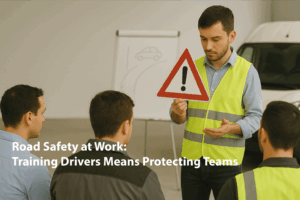
In the fields of transportation, logistics, and field operations, the kilometers keep adding up—along with the risks.
Road safety isn’t just about regulatory compliance. It’s a powerful lever to protect your employees, improve business performance, and foster a collective culture of responsibility.
And it all starts with training.
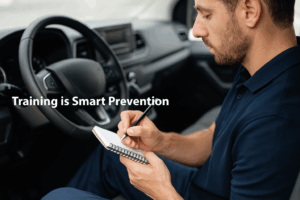
Training is Smart Prevention
Every day, tens of thousands of professionals hit the road to deliver, repair, inspect, or intervene.
And the facts speak for themselves: traffic-related incidents are a major cause of workplace accidents.
Training drivers means acting at the source:
- Reinforcing the fundamentals of road safety,
- Raising awareness of real dangers (fatigue, speed, distractions, weather…),
- Developing the right reflexes: anticipation, eco-driving, calmness at the wheel.
This isn’t just a box to tick in a compliance checklist.
It’s a strategic investment in risk reduction.

A Strong HR Signal
Implementing road safety training also sends a clear message to field teams:
“Your safety is our priority. We’re not sending you out there unprepared.”
In high-pressure environments (tight deadlines, fast pace, mental fatigue…), this makes a difference.
Trained drivers feel:
- Better equipped to handle risky situations,
- More confident during their routes,
- And most importantly, valued by their employer.
The result? Greater motivation, increased loyalty, and lower turnover.
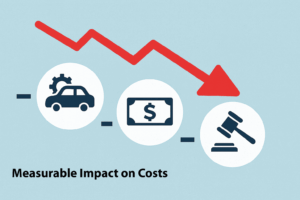
Measurable Impact on Costs
Training also helps avoid what costs the most:
- Fewer accidents = fewer immobilized vehicles, fewer delays, fewer emergency replacements.
- Fewer claims = lower insurance premiums, better control over workplace injury contributions.
- Fewer disputes = less time spent managing crises.
In short, prevention pays off.
What may appear as a HR cost quickly becomes a budget optimization tool.
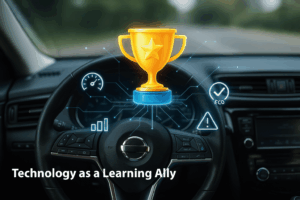
Technology as a Learning Ally
Connected tools like those offered by GloboConnect turn training into a continuous improvement process:
- Monitoring driving behaviors (acceleration, braking, cornering…),
- Real-time alerts in case of dangerous actions (thanks to onboard sensors and buzzers),
- Personalized reports for each driver,
- Targeted coaching or rewards for best practices.
This isn’t about punitive control. It’s about putting data at the service of driver progress.
Each driver can track their score, measure improvements, and adjust behaviors with concrete feedback.
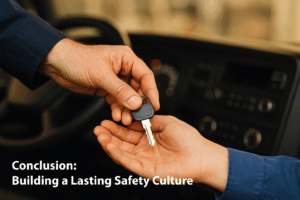
Conclusion: Building a Lasting Safety Culture
Workplace road safety can’t rely solely on rules or occasional reminders.
It must be nurtured over time, through training, awareness, leadership by example, and tools adapted to real-life field conditions.
Training drivers is not just a compliance checkbox.
It’s about building a safer, calmer, and more responsible working environment.
And in a context of labor shortages and retention challenges, it’s also a powerful differentiator in employer branding.
Want to talk about it? Need to discuss your current challenges?
Contact us to improve the security of your fleet and drivers.